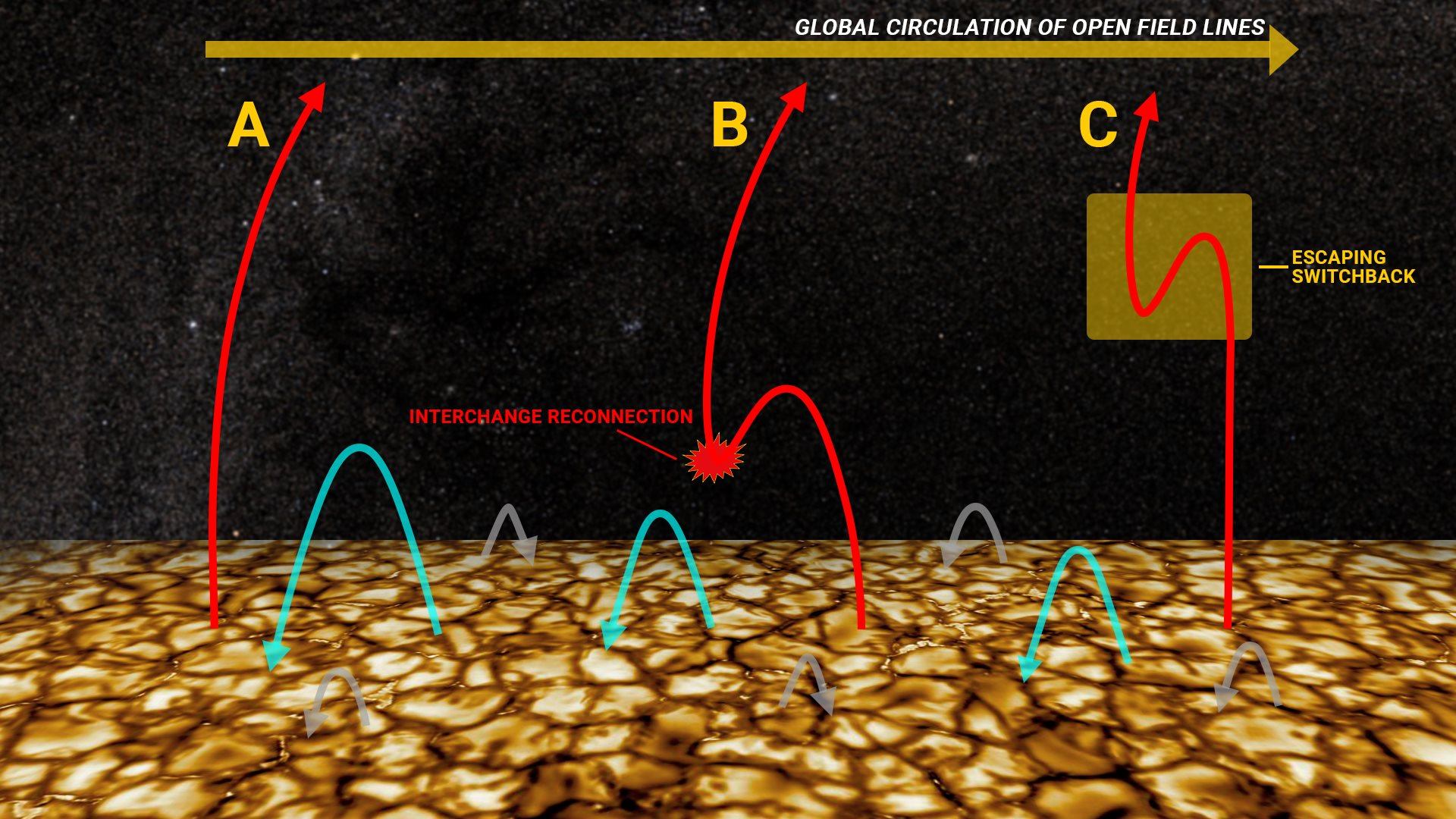This content has been archived. It may no longer be relevant

A new paper suggests sudden magnetic “switchbacks” in the solar wind — observed by Parker Solar Probe during its November 2018 solar flyby — are tied to a theory first proposed more than two decades ago about how the Sun’s magnetic field migrates. https://go.nasa.gov/
When an open magnetic field line encounters a closed magnetic loop they can undergo a process called interchange reconnection. This allows the open magnetic field line to snap into the loop, and allows one side of the formerly closed magnetic loop to connect to solar magnetic field extending outwards into the solar system. This process would create an outward-flowing S-shaped kink in the newly formed open magnetic field line — a shape that tracks with the switchbacks measured by Parker Solar Probe.
This interchange reconnection also drags the open magnetic field line across the solar surface, meaning that the Sun’s magnetic field can move east to west faster than solar rotation alone explains. This aligns with observations made during Parker Solar Probe’s first solar encounters: the larger than expected “sideways” motion of solar wind near the Sun. This, the authors suggest, is the expression of the plasma’s and magnetic field’s flow pattern deeper in the solar corona.
Article Courtesy of NASA Sun Science

